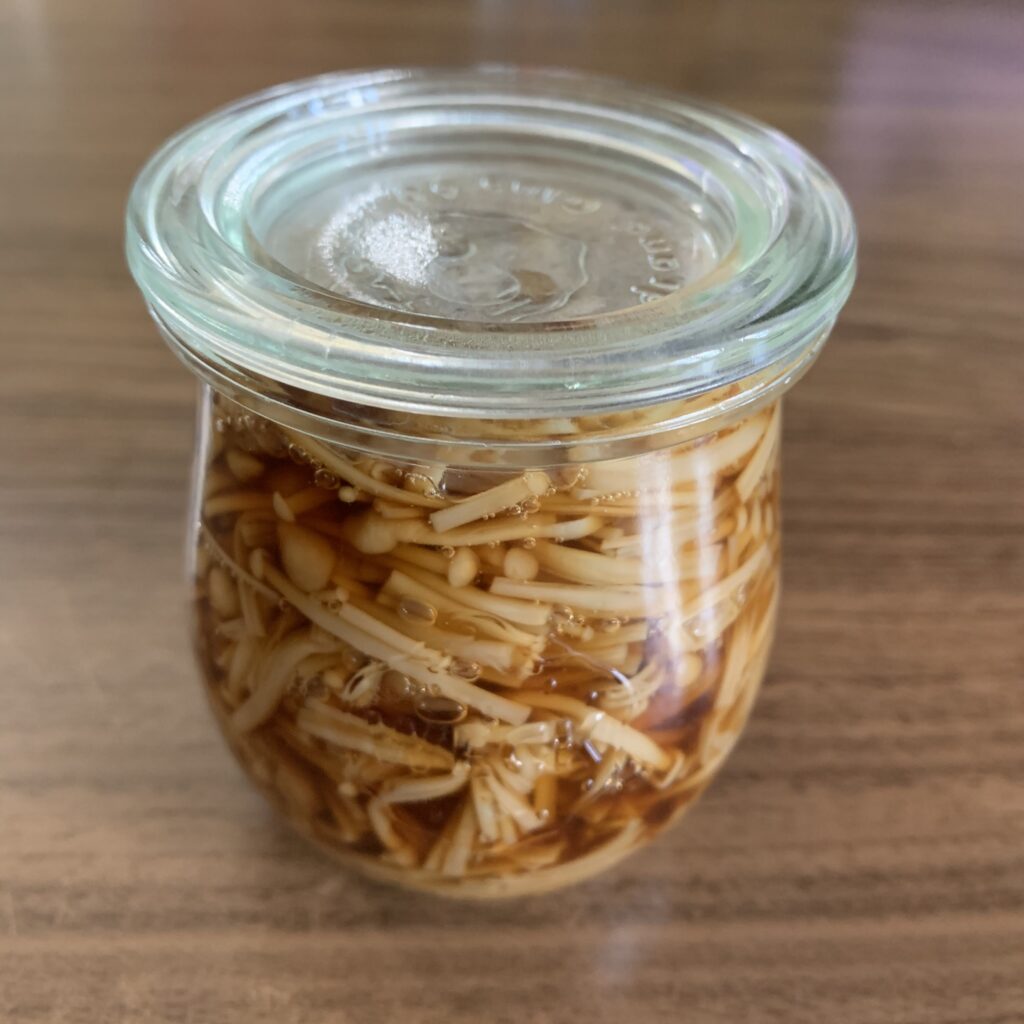
Nametake(なめたけ)
What kind of dish is nametake??
Enoki mushrooms seasoned with soy sauce and sugar are called nametake. They are eaten on top of rice or hiyayakko (cold tofu), or mixed with vegetables.
Also, “name take” is a recommended recipe because it can be stored for a long time and tastes delicious. It’s easy because you just boil enokitake with soy sauce and sugar.
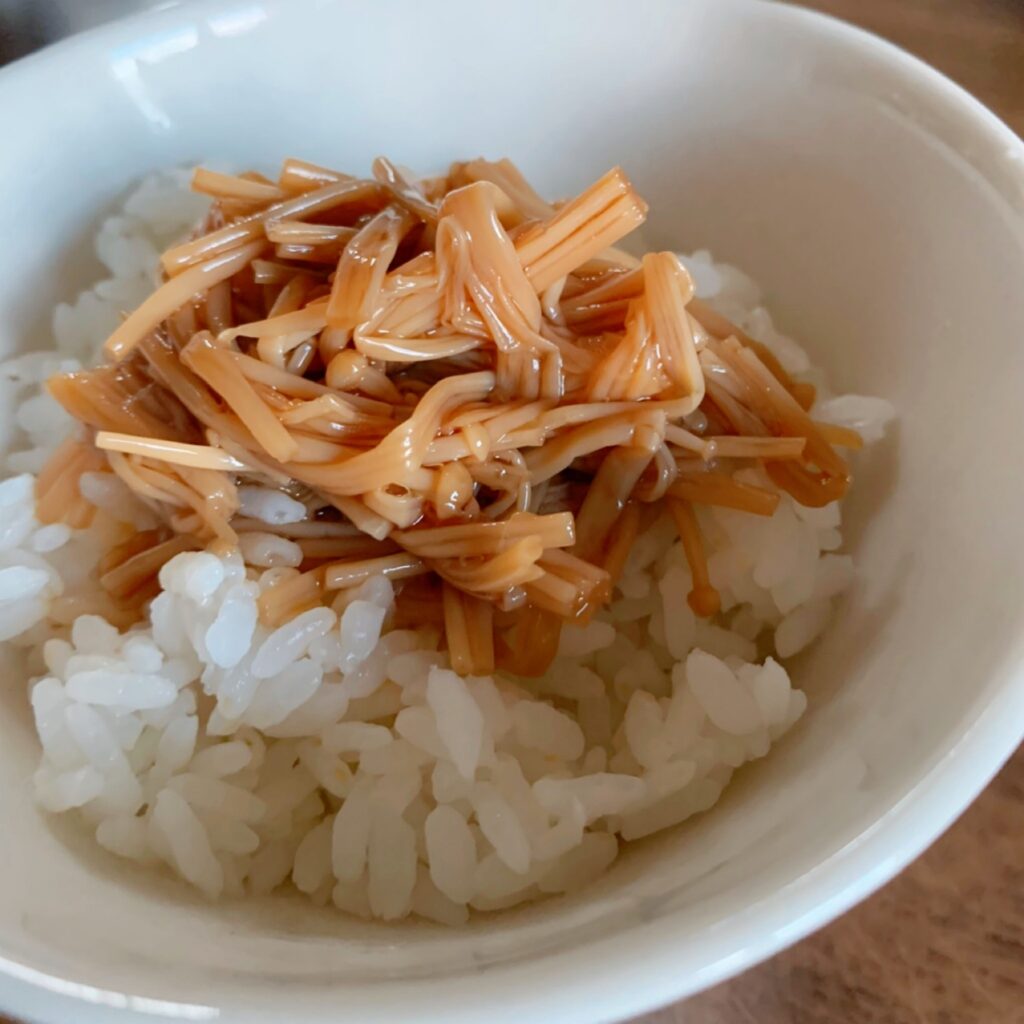
What kind of food is enokitake??
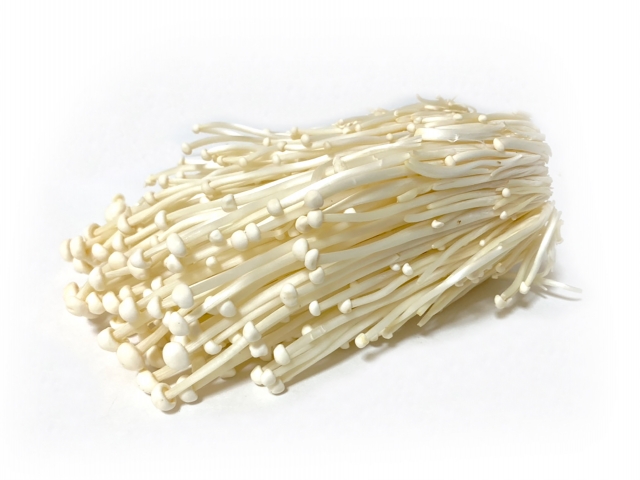
Enoki mushrooms (enokitake) are characterized by their crunchy texture and light taste. In the cold winter, it is an essential ingredient for hot pot dishes.
Natural enokitake produces a pigment called melanin to protect itself from ultraviolet rays, so it looks different from the slender, milky white enokitake you see in stores, and is brown in appearance.
It is also called “yukinoshita” because it grows in cold winter. This means under the snow.
The commonly used white enokitake is cultivated artificially throughout the country, so there is no seasonal season.
The seed is planted in a culture bottle lined with sawdust or rice bran and cultured in a dark room, which gives it its white color.
How to preserve enoki mushrooms
If you have leftover enokitake, we recommend freezing it. Not only enoki mushrooms, but most mushrooms are sensitive to moisture, so there is no need to wash them before cooking. Cut off the bottom root section and place in a storage container and freeze.
The shelf life of enoki mushrooms is about one week if kept in the refrigerator, but can be kept for about one month if frozen.
Add it to soups and hot pot dishes while frozen. It is convenient because there is no need to defrost it.
Guanylic acid, the umami component of enoki mushrooms, is produced by the action of an enzyme called nuclease inside the cells. The unique feature of this enzyme is that it becomes active when the tissue is damaged by heating or freezing. Freezing and storing enoki mushrooms increases the umami component, making them more delicious to eat.
In recent years, attention has been focused on the anti-obesity component called “mushroom chitosan” contained in enoki mushrooms. As this component is also found in large amounts inside the cells of enoki mushrooms, it is said that it can be absorbed more efficiently if the tissue is destroyed by heating or freezing. In this way, freezing and storing enoki mushrooms may also have health benefits.
The difference between nametake and nameko
Nametake is the name of a dish made by simmering enoki mushrooms in soy sauce, while nameko is the name of a type of mushroom and is a completely different dish.
Nameko also becomes slimy when heated. It is a popular ingredient in miso soup.

List of commonly used edible mushrooms:
- Enoki mushroom
- Eringi mushroom
- Nameko mushroom
- Wood ear mushroom
- Shimeji mushroom
- Mushroom
- Shiitake mushroom
- Maitake mushroom
- Oyster mushroom
- Matsutake mushroom
β-glucan, a type of dietary fiber found in all mushrooms, is said to enhance immune function and have cancer-suppressing effects.
Although mushrooms are low in energy and rich in dietary fiber, their prices are low and do not fluctuate throughout the year, so be sure to include them in your menu.
NUTRITION FACTS of Nametake

TOTAL NUTRITION VALUE
- 334 calorie
- Protein 10.1 g
- Total Fat 0.4 g
- Total carbohydrate 73.6 g
- Sodium 8.8 g
INGREDIENTS for Nametake (5SERVINGS)
I used 500g of enoki mushrooms and the finished product weighed about 430g.
- Enoki mushrooms 200g (~400g)
- ☆Sugar 20g
- ☆Soy sauce 60g
- ☆Mirin 60g
- ☆Grain Vinegar 16g
- ☆Water 50g
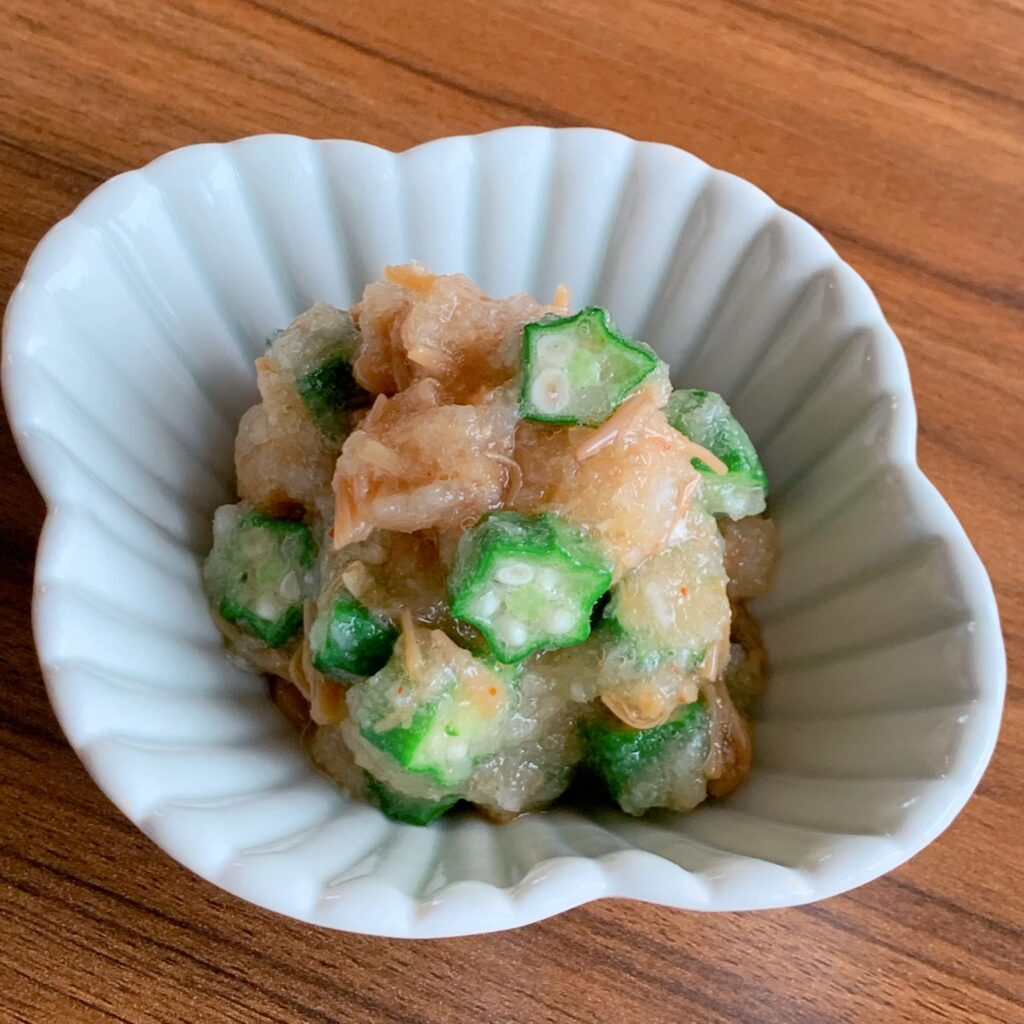
Nametake COOKING INSTRUCTIONS
- Cut off the bottom root of the enoki mushroom with a knife.
- Put sugar, soy sauce, mirin, grain vinegar, water and enoki mushroom in a pot and heat over medium heat.
- Once boiling, reduce heat to low and simmer.
- Once thickened, turn off heat and place in a clean storage container to cool.
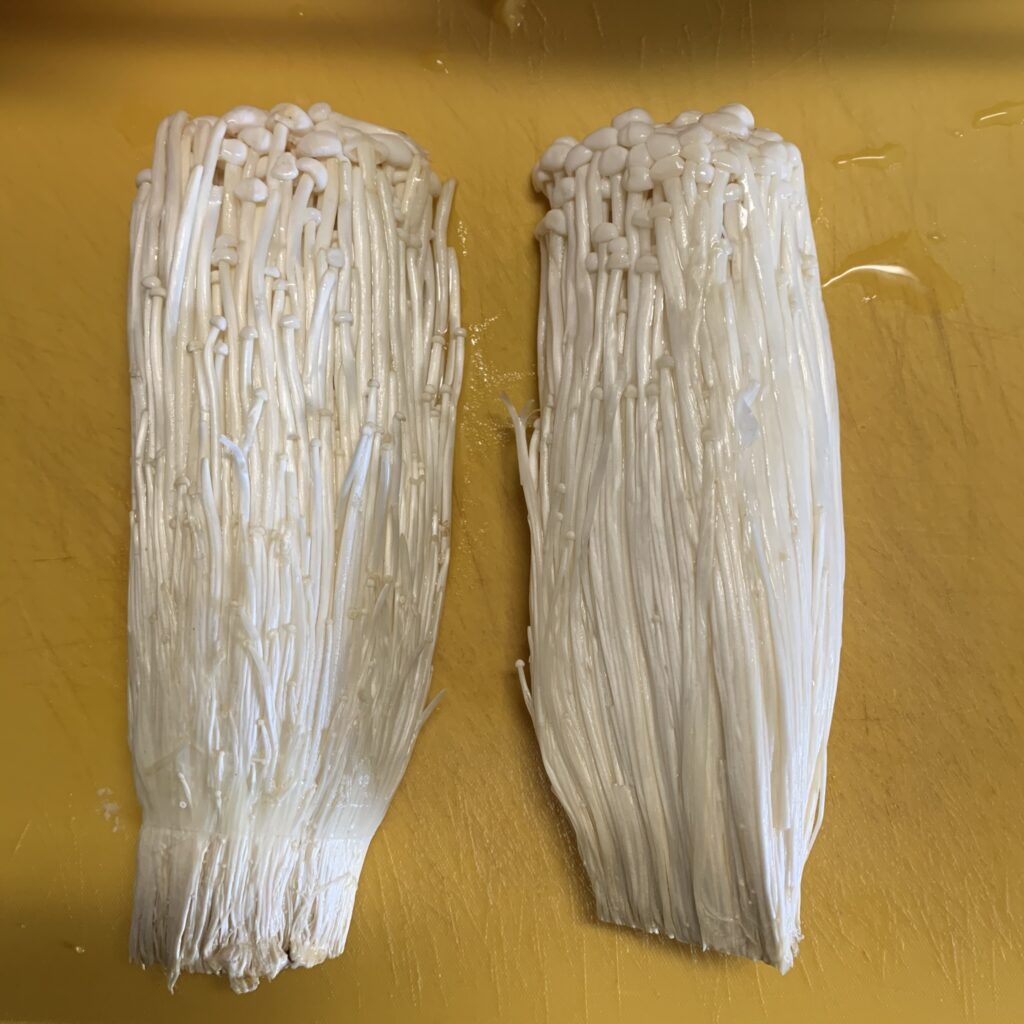
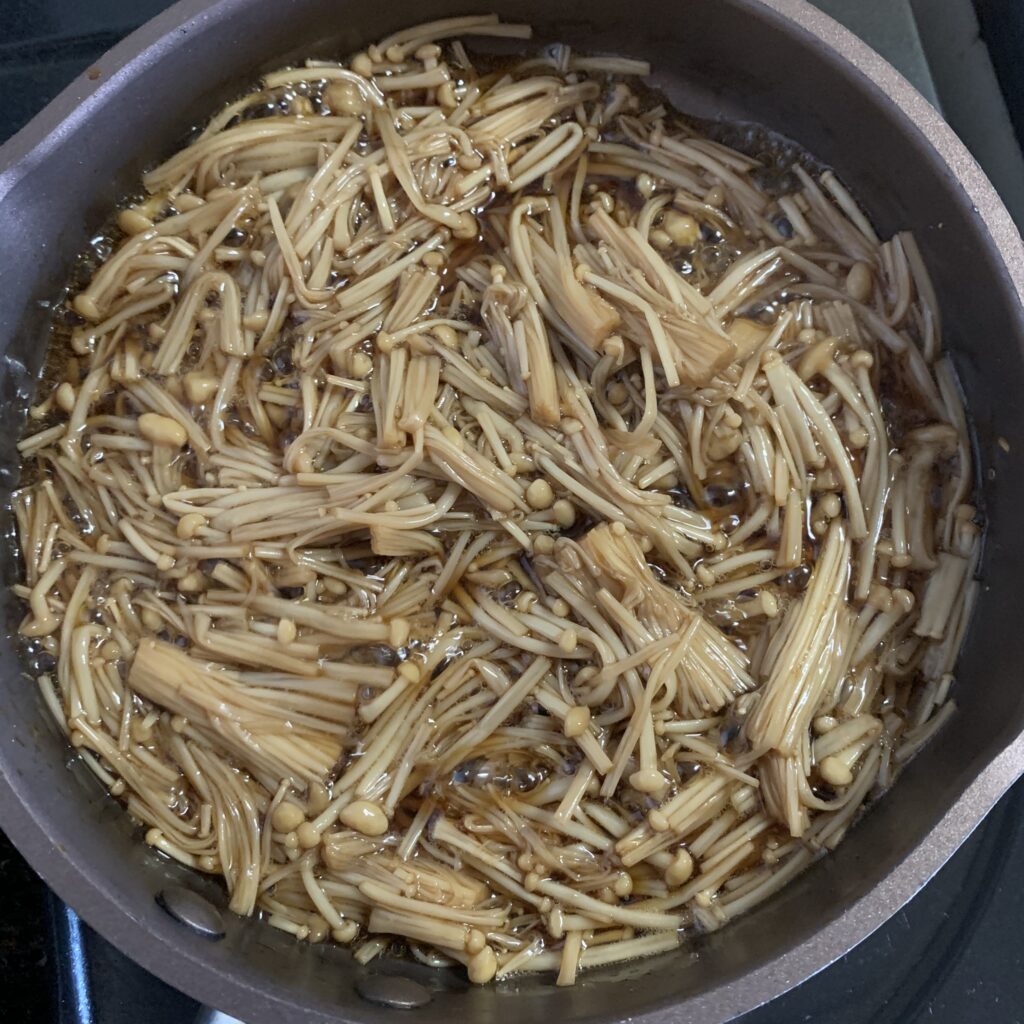

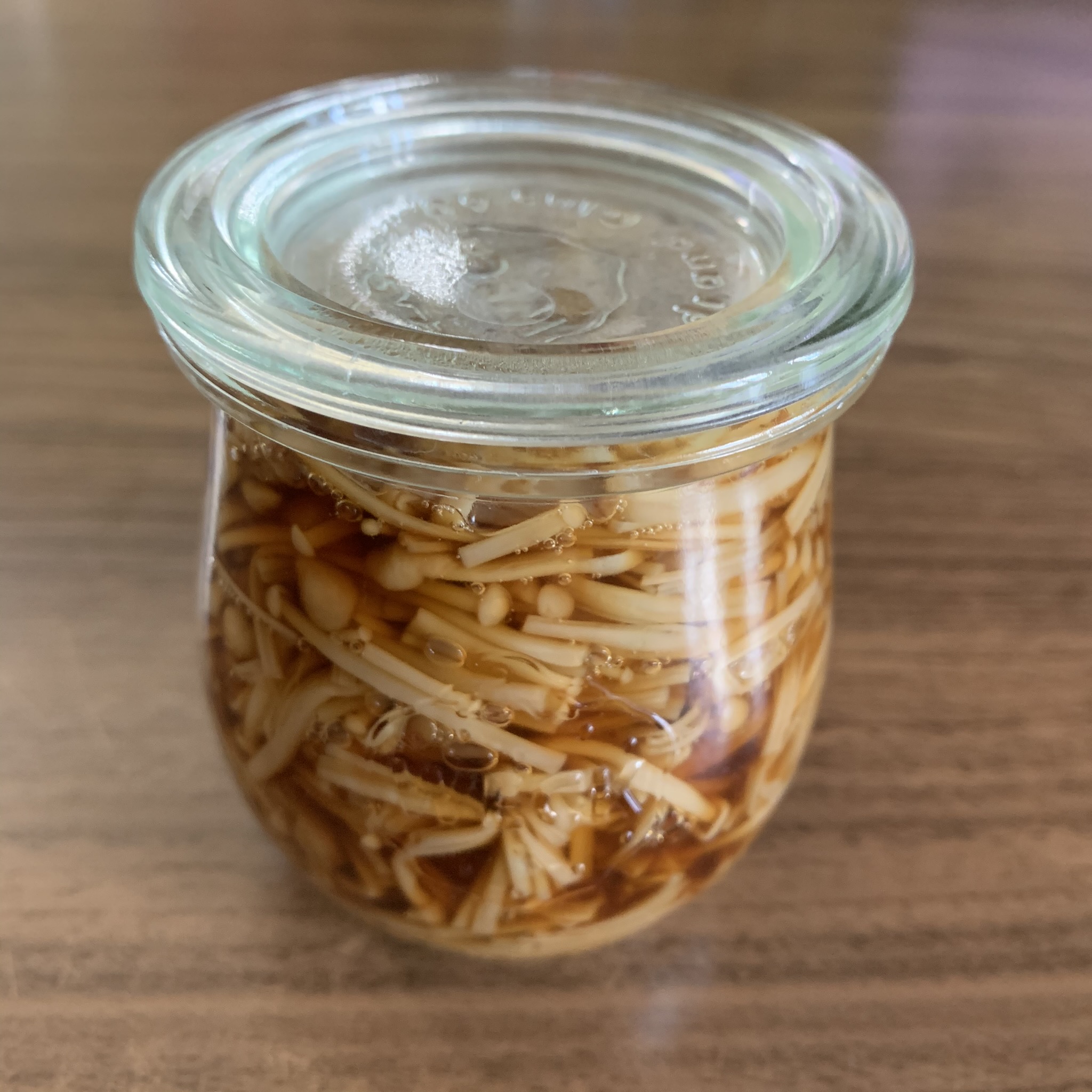


コメント